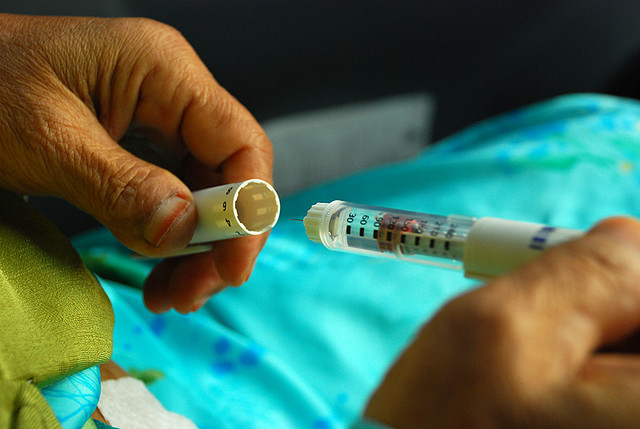In the UK, insulin doesn’t cost anything for diabetics who require it, but there is an estimated 50 million people worldwide who cannot afford insulin.
In many countries, there is nothing that even resembles an NHS, and the cost of insulin can drive families into poverty, especially if a child becomes ill due to a lack of medication.
Diabetes awareness is a broad term – and often relates to people’s knowledge of the condition, but a lack of insulin is one of the biggest problems diabetics across the world are facing, and it needs to be recognised.
Why does insulin cost so much?
The price of insulin – a hormone which regulates glucose levels – is influenced by many factors.
The demand is staggering, with an estimated 100 million diabetics worldwide requiring insulin. This includes all type 1 diabetics (approximately 17.4 million people) and between 20 to 30 per cent of people with type 2 diabetes.
Type 1 diabetics would die without insulin – the most common cause of global death for a child with type 1 diabetes is a lack of access to insulin – while type 2 diabetics denied insulin they require would be at an increased risk of amputation, blindness and kidney failure.
Among the price barriers include storage and distribution costs, but it is frequently those in smaller countries with reduced markets, problems with transport and poor resources where insulin can be too costly to afford.
This can lead to average HbA1c results being too high in diabetics and a higher prevalence of complications such as diabetic ketoacidosis, malnutrition and recurrent infections, resulting in premature death.
While insulin is recognised as an Essential Medicine by the World Health Organisation, it is estimated that half of those that require insulin do not have access to it.
What is being done?
The International Insulin Foundation previously investigated insulin access in Vietnam, Mozambique, Zambia, Mali, Kyrgyzstan and Nicaragua.
Various factors such as distribution problems and poor purchasing practises were found to impact the price of insulin substantially compared to other medicines.
A diabetic patient in Mali is forced to spend 25 per cent of their average income on insulin, while many families have to move nearer to urban hospitals to buy insulin, sacrificing food and education for their children.
Research like this has laid the groundwork for projects such as the ACCISS (Addressing the Challenge and Constraints of Insulin Sources and Supply) study from Health Action International.
Their plan is to map the global insulin market and assess the market reach of pharmaceutical companies which manufacture and develop insulin. Health Action International’s aim is to create innovative supply models for delivering insulin, as well as devising policies to tackle barriers that prevent problems with insulin access.
What can I do to increase awareness about insulin access?
Awareness of the problems that people with limited insulin access face is starting to become more prominent, especially with Facebook groups such as Diabetes 24/7, which actively campaign to increase diabetes intelligence.
During November 2014 – Diabetes Awareness month – a Tumblr-based campaign called #Insulin4All also helped to raise awareness of insulin access, as do websites such as insulinforlife.org.
Most people around the world who need insulin cannot afford it, and may end up dying as a result. Raising awareness is crucial in reducing the cost and enabling other diabetics to receive what we, in the UK, may take for granted.




